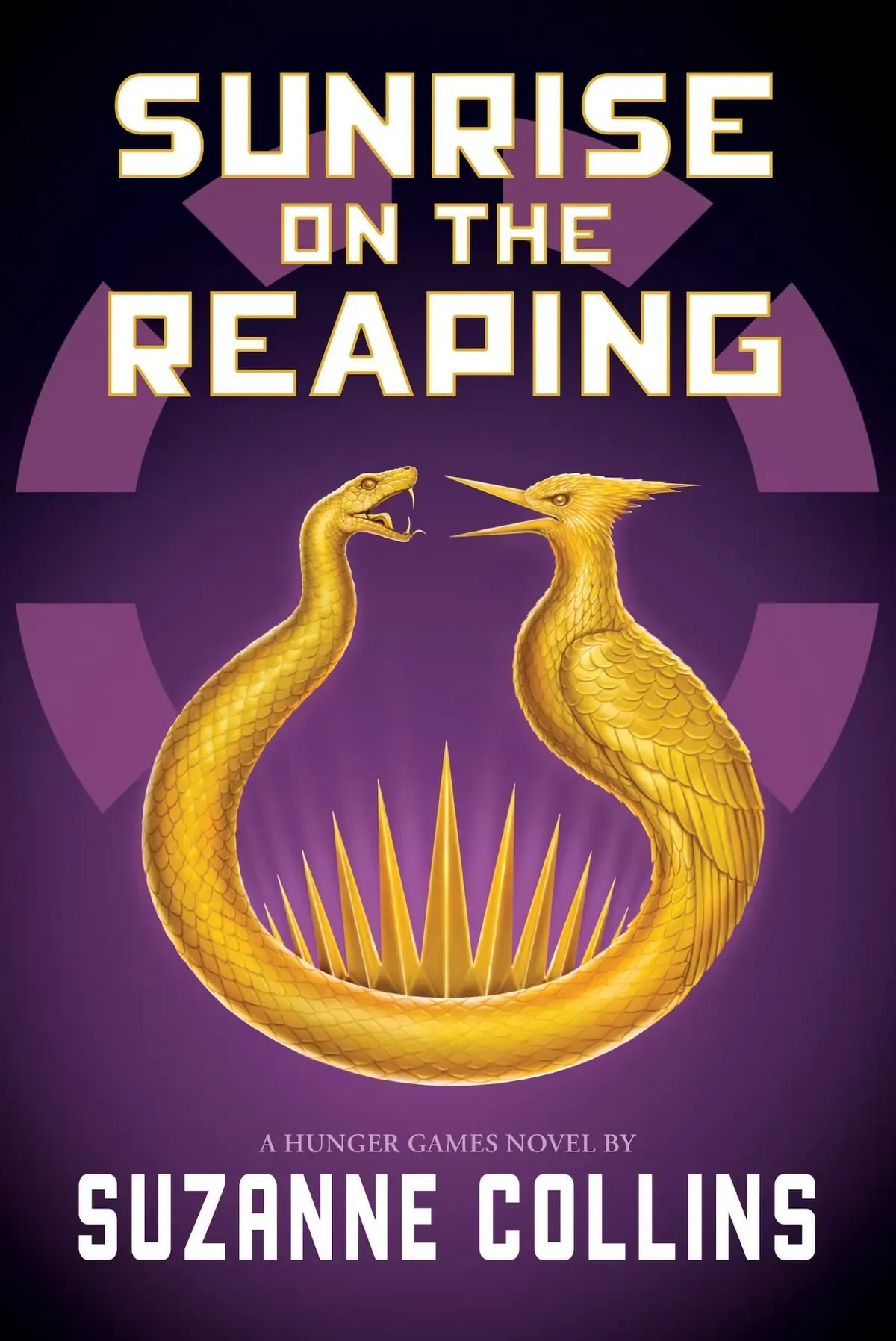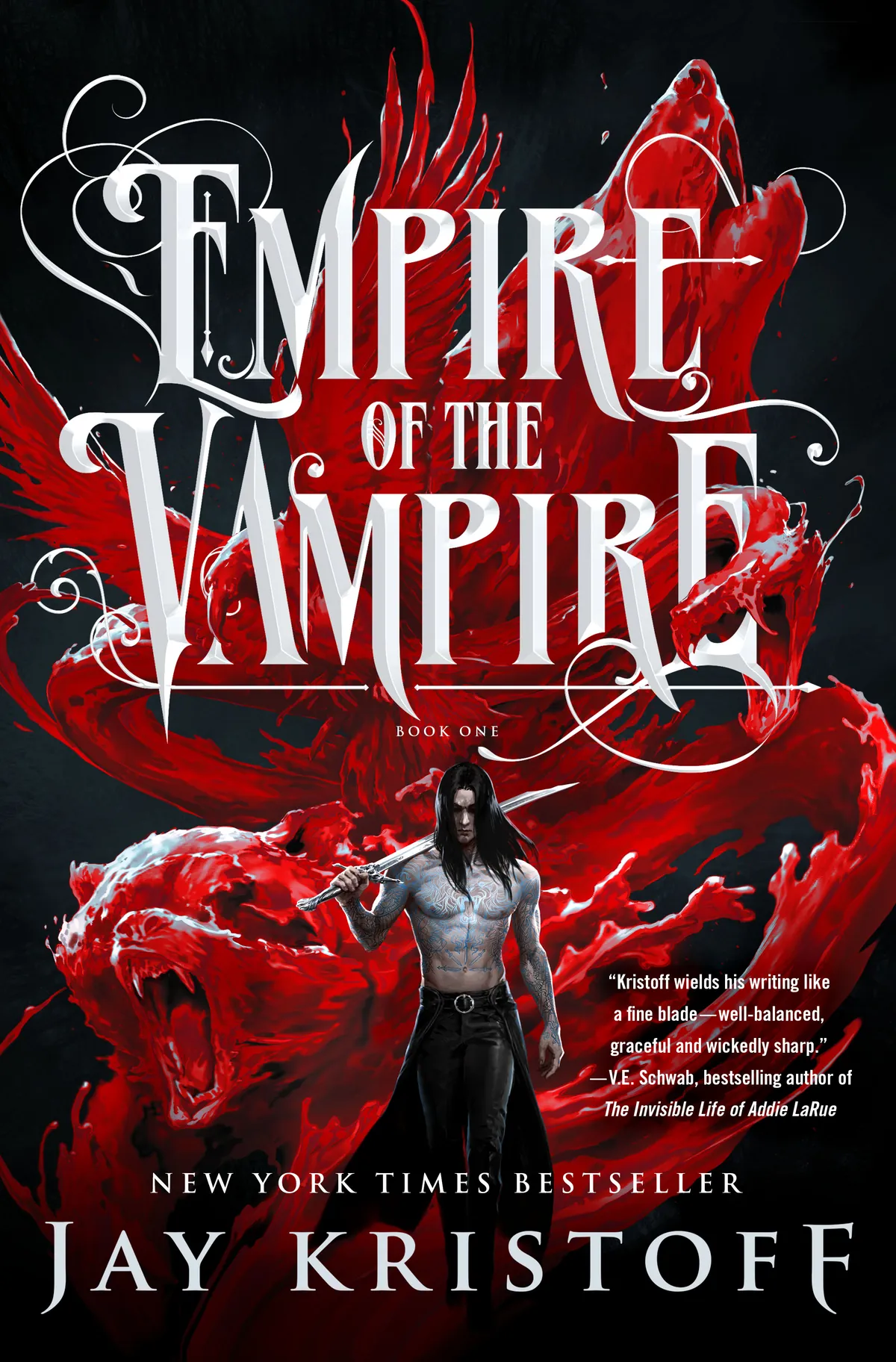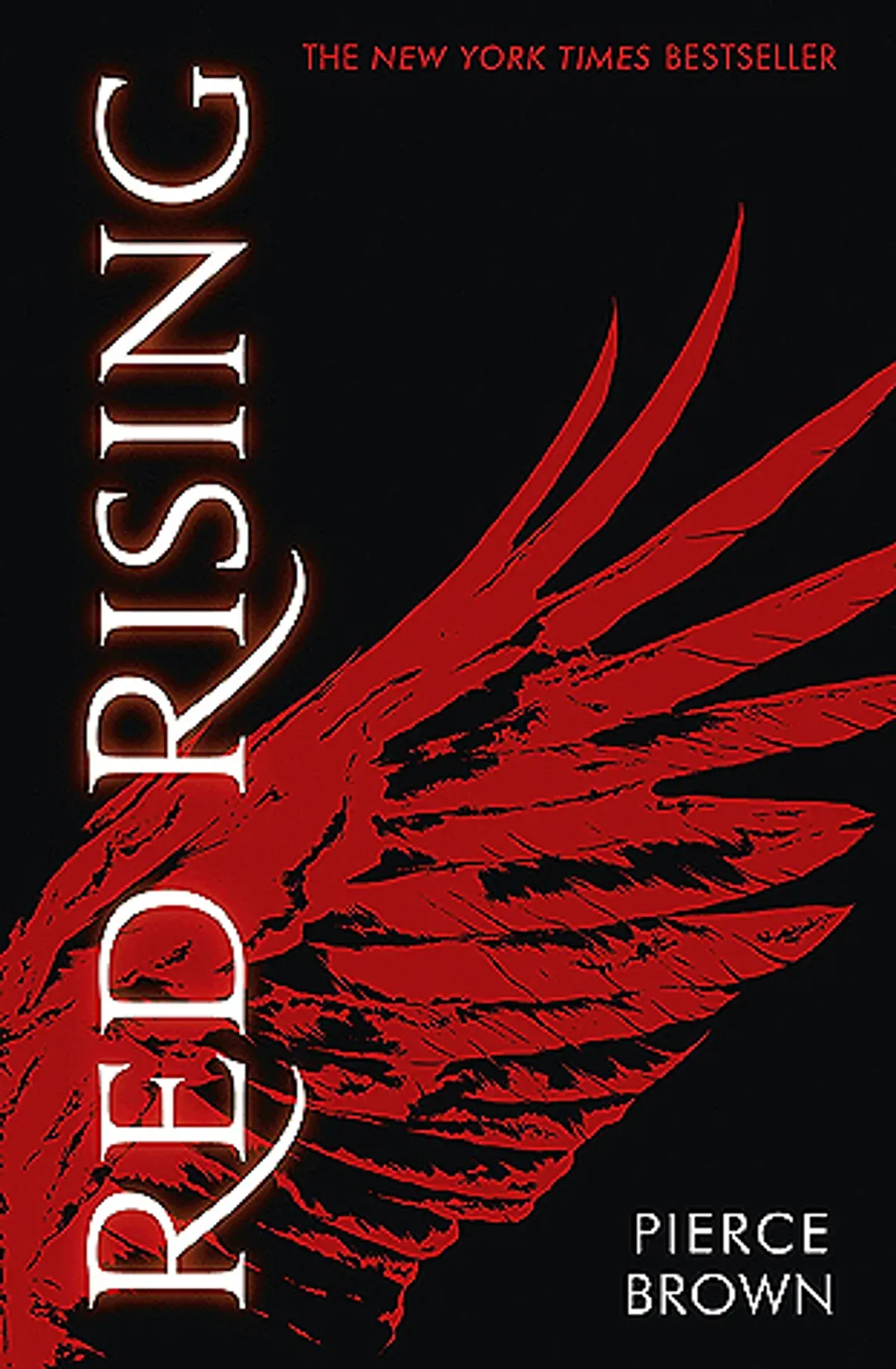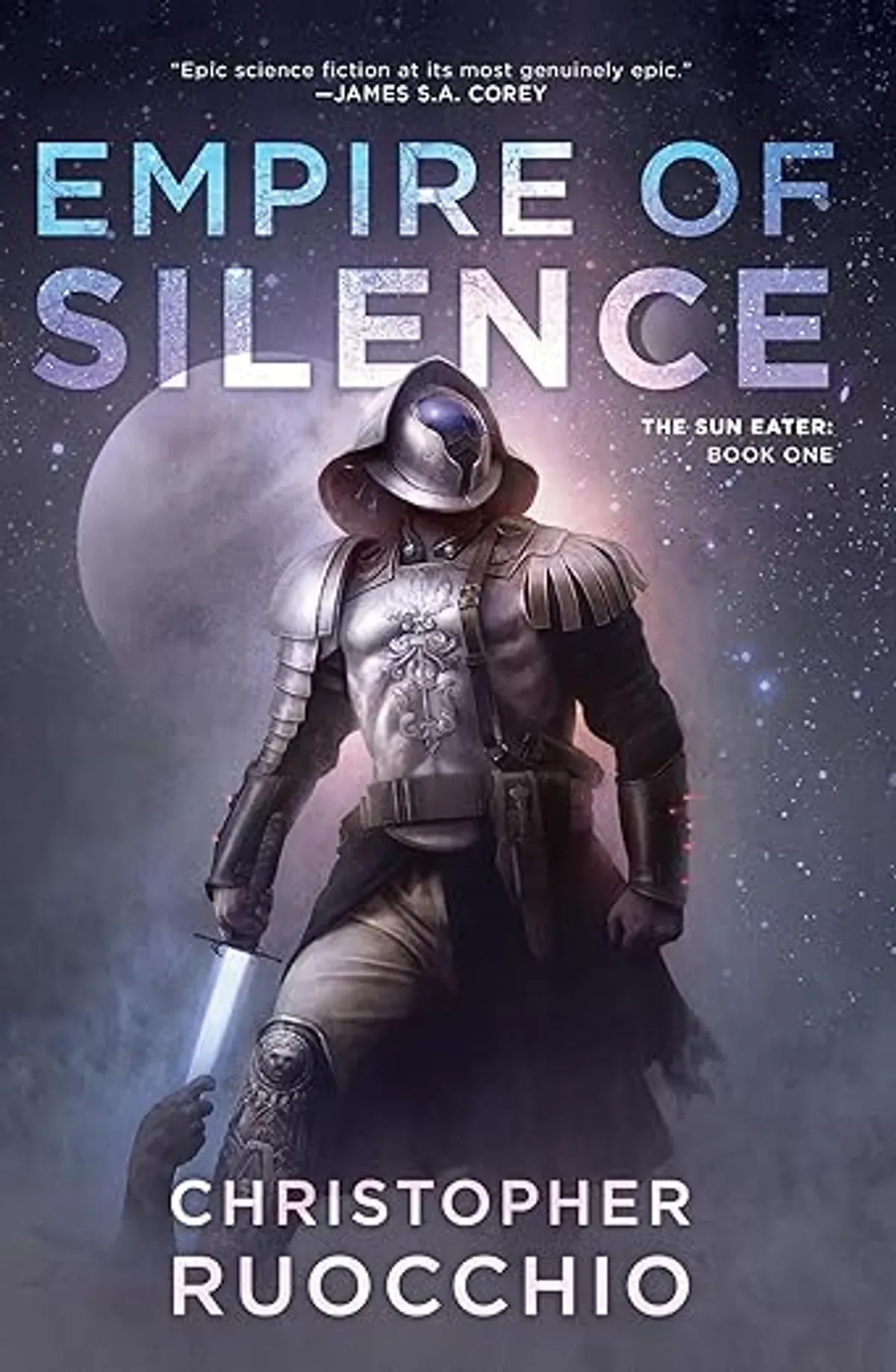The Sunrise on The Reaping
by Suzanne Collins
Reviewed by Devin Ford on March 22, 2025
Est. Reading Time: 13 min
At a Glance: When Loss is the Only Certainty
As dawn breaks on the fiftieth annual Hunger Games—the Second Quarter Quell—sixteen-year-old Haymitch Abernathy faces a brutal twist: The number of tributes collected from each district will double. Within District 12 Haymitch has established a meaningful existence through his family bonds and his commitment to a girl he intends to marry. His name is called at the reaping and his whole world instantly falls apart. The Capitol forces Haymitch to join three other tributes from District 12 in its deadly spectacle where he immediately understands that he has become the Capitol’s target for elimination. The Capitol runs the Games with rigged rules while its merciless nature makes survival look impossible. A powerful defiance lives inside him which surpasses simple survival and represents a threatening spark with the potential to trigger something bigger than his own existence. Haymitch’s arena battles mark the beginning of his transformation into the embittered mentor who appears years later in Katniss Everdeen’s narrative. The Sunrise on The Reaping describes the transformation of a promising young man with a bright future into an alcohol-dependent victor who tells tributes they’re all doomed while showing how his personal tragedy sparked a revolutionary movement.
This section returns to Panem to explore the world before Katniss took center stage.
The Sunrise on The Reaping serves as the connecting piece between The Ballad of Songbirds and Snakes which takes place during the 10th Hunger Games and the original trilogy that starts with the 74th Games. Collins skillfully depicts Panem in this intermediate period by showing a nation under President Snow’s tightening control while revolutionary feelings continue to simmer underneath.
The depiction of District 12 captures its essence through detailed descriptions of the Seam and mines and the merchant section to create a world that feels recognizable to fans of the original trilogy yet distinct for this earlier time period. Understanding Haymitch’s character and motivations requires insight into the economic disparities and daily challenges faced by Panem’s citizens.
The Capitol stands out for its typical excess and cruelty yet Collins introduces new layers by showing signs of dissent within its citizenry. Readers see how future revolutionaries such as Plutarch Heavensbee started their journey by observing their younger selves. The novel’s imaginative world-building establishes early elements that will develop fully decades later demonstrating how the rebellion led by Katniss has deep historical roots.
The Quarter Quell operates through complete exploration of its special conditions announcement including doubled tributes and its distinctive arena design. The author demonstrates how the Capitol applies intensifying propaganda tactics to retain power over the districts while simultaneously entertaining its populace.
The most captivating aspect is the genesis of mockingjays which become emblems of resistance. The detail serves as a beautiful extension to the original trilogy by introducing additional meanings to an established symbol.
Science as Weaponry: The Capitol’s Technological Terrors
Panem lacks conventional magic systems but Collins creates a parallel through sophisticated technology and genetic engineering. The Capitol displays its scientific advancements through “mutts,” which are genetically altered monsters created to instill fear and provide entertainment during the Games.
The arena for the Second Quarter Quell features the series’ most unsettling creations yet. The Capitol transforms beautiful butterflies into deadly weapons by making them capable of delivering electric shocks. Creatures whose bodies have been modified to carry weapons unsettle our understanding of organic life by merging it with technology and produce monsters that evoke stronger fear responses than standard fantasy creatures because they seem scientifically achievable.
The technological monstrosities perform two important functions within the story. The Capitol possesses absolute power as demonstrated by their ability to create such monstrosities only through vast resources and complete ethical abandonment. These creatures represent the Capitol’s ability to turn anything natural and good into weapons while simultaneously turning children into killers.
The in-depth explanations about mutation functionalities and vulnerabilities alongside tributes’ adaptive survival strategies generate narrative tension similar to that of magic systems in conventional fantasy. Haymitch demonstrates his intellectual capacity through his strategic threat analysis which helps build an understanding framework for the Capitol’s technological advances until the original trilogy.
The Hunger Games present pseudo-scientific horrors that unsettle fantasy readers because these horrors draw directly from real-world genetic and technological developments to create a sense of immediacy.
From Tribute to Mentor: A Character Study in Loss
Haymitch Abernathy first appeared in the original trilogy as an alcoholic who uses cynicism to mask his severe psychological trauma. Collins presents the intelligent and determined young man beneath Haymitch’s damaged mentor persona who maintains strong family and girlfriend connections. The novel’s emotional heart lies in Haymitch’s journey from being an optimistic teenager to becoming a shattered champion.
Haymitch stands out as an engaging protagonist because his defining strengths lead directly to his downfall. His ability to think strategically and adapt to situations enables him to survive the Games but simultaneously positions him as a danger to the Capitol. President Snow uses Haymitch’s profound ability to love against him by exploiting his emotional weaknesses with exact precision. The author demonstrates with powerful impact how his diminishing hope and humanity leads to an understandable and virtually inevitable turn to alcoholism.
The characters who surround Haymitch share the same level of detailed realization. The original owner of the mockingjay pin that reaches Katniss becomes a fully realized character whose alliance with Haymitch creates a lasting connection across generations. The user describes her death in battle as “brutal” yet it delivers emotional resonance that elevates it above standard young adult fiction narratives.
The Hunger Games force a victor to mentor his own child while knowing that the chances of survival are minimal creating a unique cruelty between Beetee and his son. The Capitol demonstrates its methodical eradication of human compassion and family connections through this dynamic.
The most disturbing aspect remains Haymitch’s romance with Lenore. Through her genuine portrayal of their relationship Collins makes Haymitch’s victory consequences appear even more heartbreaking. Through their strategic use of calculated cruelty the Capitol demonstrates chilling control effectiveness which turns personal relationships into tools of oppression.
The Quarter Quell: A Plot Built on Blood and Betrayal
The structure of The Sunrise on The Reaping adopts the standard Hunger Games format of reaping, training, interviews and the Games but consistently surprises readers with unexpected twists. The storyline relentlessly progresses from Haymitch’s initial selection as tribute to his unexpected win and follows through to the traumatic aftermath that defines his later self.
Collins portrays the Games with relentless brutality that fits the concept. The quantity of tributes in this book generates disorder and destruction beyond anything seen in earlier Hunger Games competitions. Collins alternates between dynamic action scenes and strategic thinking segments that display Haymitch’s intelligence which becomes his key survival tool when physical strength proves insufficient.
The novel reveals the Capitol’s most significant manipulation technique as its ability to control public perception regarding the Games. The regime’s propaganda machine becomes evident when comparing the real events in the arena to the televised versions shown to districts. Collins draws inspiration from David Hume who wrote about “the easiness with which the many are governed by the few” to explain how narrative control plays a central role in power dynamics.
The final act creates a dual impact where physical triumph leads to emotional ruin. Haymitch’s tactical manipulation of the arena’s force field to beat his final fight stands as a victory of brain power over physical force yet Snow’s swift vengeance spoils his fleeting success. After losing the people who matter most to him he finds himself trapped in a mental prison filled with alcohol and nightmares from which he cannot escape.
Prose That Cuts Like a Tribute’s Blade
In The Sunrise on The Reaping Collins demonstrates a matured writing style which shows significant growth from her previous works. She retains the approachable writing that attracted audiences to the original trilogy while incorporating more complex prose together with direct portrayals of violence and psychological distress. This book bridges young adult and adult fiction genres through its complex themes and deep emotions which defy basic classification.
Through her writing she describes the Games with controlled brutality while avoiding any glorification of violence so readers experience its real impact. The narrative gives weighty attention to the deaths of crucial characters so that readers experience genuine emotional reactions instead of viewing these deaths as simple plot mechanisms.
Collins excels particularly in portraying psychological states. The author deeply understands trauma and grief through a detailed narrative about Haymitch’s slow descent into alcoholism following his nightmares and breakdown after the Games. The novel reaches its most powerful moments when it depicts the harsh realities of what winning the Hunger Games demands.
The repeated appearance of Edgar Allan Poe’s “The Raven” throughout the novel establishes an echoing sense of unavoidable tragedy and loss. The literary reference strengthens the prose and highlights how memory and grief trap people in their past experiences.
Between the Sheets: Survival Trumps Romance
BroMantasy Spice Rating
Barely There
(Chaste Romance)
The Sunrise on The Reaping maintains the Hunger Games legacy by examining survival and political themes and personal development instead of romantic or sexual matters with a spice level of 🌶️ (1.0). Haymitch’s personal connection brings emotional depth into the story yet the novel maintains its primary focus on the games and their consequences.
The narrative benefits from this approach because adding explicit romantic content would weaken the book’s uncompromising exploration of trauma and loss. Collins can keep attention on political themes and character growth as main elements of the series because there is limited spice content.
Readers who dislike romantic fantasy will find The Sunrise on The Reaping centered around action sequences and strategic plotting with psychological depth instead of romantic plots. Character relationships increase the story’s intensity instead of offering romantic escapism.
Bro Reading Comfort: Dark Politics Over Awkward Content
Public reading issues are minimal for The Sunrise on The Reaping when rated 😳 (1.5). Darker themes in the book develop through political issues and psychological damage instead of sexual content or explicit scenes that could make public reading uncomfortable.
Darkness Factor: The Games Behind the Games
The Sunrise on The Reaping is possibly the darkest Hunger Games entry with its darkness score of 💀💀💀💀 (4.5). The Second Quarter Quell displays merciless brutality through detailed descriptions of numerous deaths which extend past usual YA genre limitations. Readers reported that Ampert, Maysilee, and Louella meet brutal ends while impacting them emotionally.
The mental torment seems to surpass the physical brutality in intensity. The systematic destruction of Haymitch’s humanity through the Games and subsequent calculated loss of loved ones presents a devastatingly real portrait of trauma. The fact that Haymitch’s gift of candy turned deadly for his girlfriend displays psychological torment that goes beyond physical harm.
The most haunting element is how reality stands in stark opposition to propaganda. The Capitol manipulated Games footage to construct false narratives while demonstrating the extent to which those in authority can distort reality. The theme reflects Collins’ inspiration regarding narrative control powers and expands the darkness from personal trauma to widespread societal manipulation.
The narrative uses this darkness to explain Haymitch’s development into the character we encounter in the original trilogy and his reliance on alcohol as his sole method of sustaining life despite its lethal consequences. The epilogue provides essential emotional resolution while keeping Haymitch’s tragic reality intact through its description as “a beautiful sendoff, even if it was still sad.”
Book Battlefield: A Prequel That Enhances the Original
Collins’ expanded universe includes The Sunrise on The Reaping as its fifth installment and second prequel to serve a defined purpose. This prequel novel stands apart from typical examples that only provide superfluous backstory because it transforms readers’ understanding of a pivotal character from the original trilogy.
This book presents a protagonist young Haymitch who readers can emotionally connect with better than the villainous origin story of Coriolanus Snow in The Ballad of Songbirds and Snakes. Both prequels deepen our knowledge of Panem but The Sunrise on The Reaping establishes stronger ties to the revolutionary ideas that shape the original trilogy.
Collins maintains her distinctive place in dystopian literature through her rigorous analysis of the political manipulation that occurs through entertainment and spectacle. The Hunger Games series stands apart from many dystopian novels because it focuses on media manipulation and propaganda while investigating the psychological toll of resistance.
The Sunrise on The Reaping presents the same level of thematic depth found in Red Rising by Pierce Brown or Station Eleven by Emily St. John Mandel but remains suitable for younger readers.
Should You Bother?
For Fans of the Original Trilogy: Absolutely. By developing Haymitch into a tragic hero this book adds depth to his relationships with Katniss and Peeta throughout the original series. Links to established lore like the mockingjay creation story and Effie’s family background deliver deep context without losing the story’s suspense.
Newcomers should read this series installment with certain reservations. The book functions as an independent tale about survival against the odds while readers gain maximum emotional depth by understanding Haymitch’s future development. The user advises those who aim to read the original trilogy to avoid the epilogue.
For Readers Who Enjoyed the Political Themes: The analysis of propaganda and narrative control alongside the concept that “the many are governed by the few” presents sophisticated thematic elements that extend beyond conventional YA literature boundaries. The series gains depth through its examination of revolutionary development across multiple generations.
For Those Who Appreciate Character Studies: The psychological transformation of Haymitch from a determined tribute to a shattered victor provides a comprehensive explanation for his subsequent alcoholism and cynicism. The narrative creates a rich tapestry through the well-developed supporting characters who respond to oppression in various ways.
Final BroMantasy Verdict
The Sunrise on The Reaping functions excellently as both a prequel and an independent narrative. Collins demonstrates profound knowledge of her Panem universe as she returns to expand character depth and past events while preserving narrative suspense despite knowing the story’s ending.
The book stands out because it reshapes our perception of Haymitch Abernathy. The character’s alcoholism and bitterness from the original series transforms into a multi-layered response to extreme trauma and loss within this prequel. Through this new context the series gains additional emotional layers while respecting the integrity of existing character portrayals.
The novel presents male readers with substantial insights into political themes and strategic thinking alongside psychological resilience which goes beyond standard YA genre limitations. Haymitch’s transformation from a determined participant in the Games to a revolutionary symbol demonstrates how resistance can develop in individuals who appear broken.
The book presents a direct analysis of propaganda and narrative control which connects strongly to today’s media environment showing Collins’s ability to use her dystopian world as a platform for real-world power dynamic commentary. The ability of these themes to connect with readers through multiple generations confirms their universal significance.
The Sunrise on The Reaping presents a reading experience filled with action and emotion while delivering political insight whether you know The Hunger Games series well or you are a new reader of Collins’ work. Expect a heart-wrenching journey which ultimately delivers the signature bittersweet hope of this exceptional series.
You Might Also Enjoy
Frequently Asked Questions
Is this book part of a series?
Yes, this is book 5 in the The Hunger Games series.
How spicy is the romance?
We rate the spice level at 🌶️ (1/5). Limited romantic elements in favor of survival, politics, and personal tragedy
How uncomfortable is it to read in public?
We rate the public reading discomfort level at 😳 (1.5/5). Disturbing themes presented through a political lens rather than gratuitous content
How dark are the themes in this book?
We rate the darkness level at 💀💀💀💀 (4.5/5). Unflinching brutality, genuine loss, and the psychological destruction that created the alcoholic we know from the original trilogy
What age group is this book for?
This book is generally recommended for adult readers due to its mature themes. We recommend checking specific content warnings if you are sensitive to certain topics.






